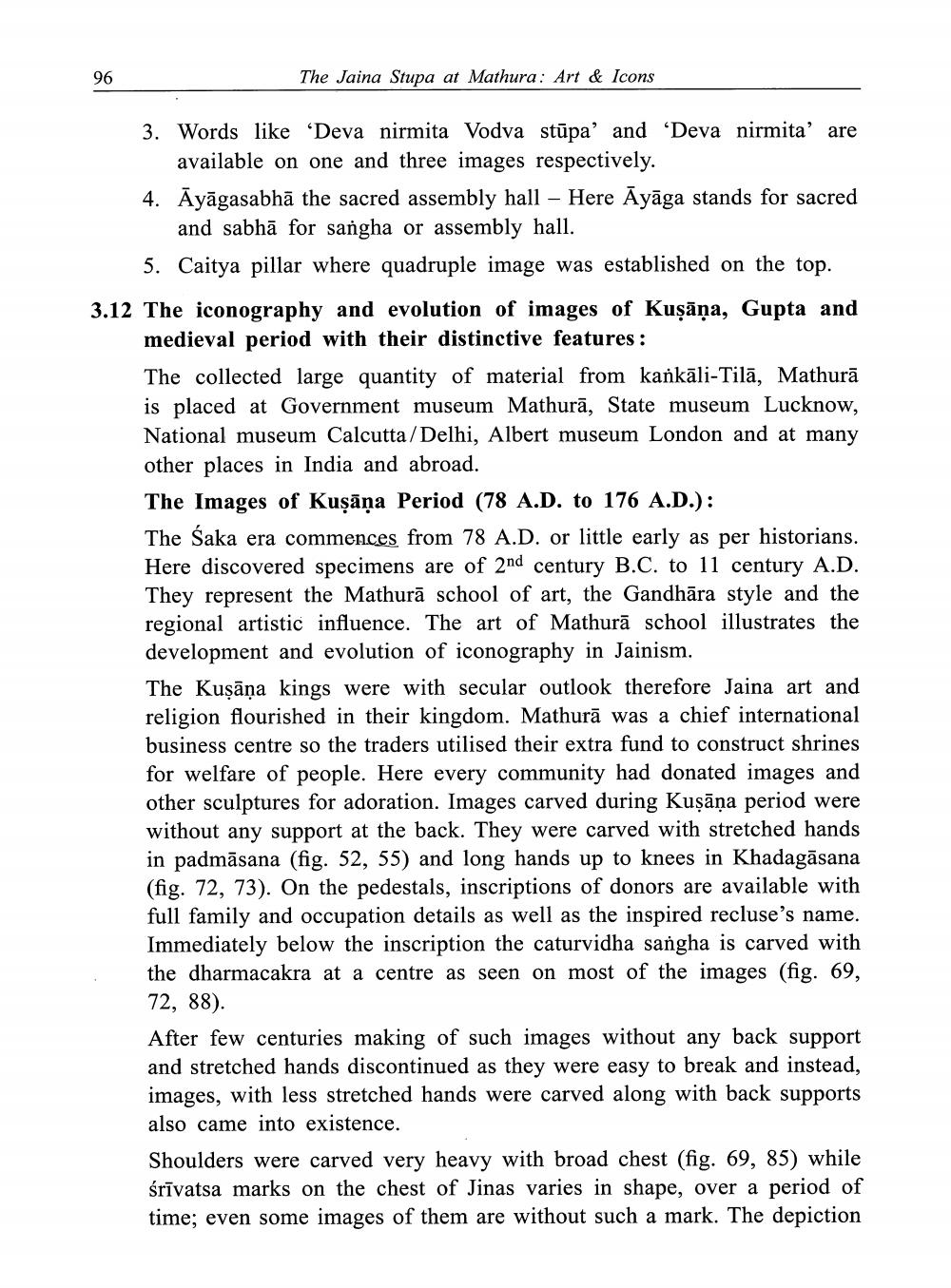________________
96
The Jaina Stupa at Mathura: Art & Icons
3. Words like 'Deva nirmita Vodva stūpa' and 'Deva nirmita' are
available on one and three images respectively. 4. Āyāgasabhā the sacred assembly hall - Here Āyāga stands for sacred
and sabhā for sangha or assembly hall. 5. Caitya pillar where quadruple image was established on the top.
3.12 The iconography and evolution of images of Kuşāņa, Gupta and
medieval period with their distinctive features: The collected large quantity of material from kankāli-Tilā, Mathurā is placed at Government museum Mathurā, State museum Lucknow, National museum Calcutta/Delhi, Albert museum London and at many other places in India and abroad. The Images of Kuşāņa Period (78 A.D. to 176 A.D.): The Saka era commences from 78 A.D. or little early as per historians. Here discovered specimens are of 2nd century B.C. to 11 century A.D. They represent the Mathurā school of art, the Gandhāra style and the regional artistic influence. The art of Mathurā school illustrates the development and evolution of iconography in Jainism. The Kuşāna kings were with secular outlook therefore Jaina art and religion flourished in their kingdom. Mathurā was a chief international business centre so the traders utilised their extra fund to construct shrines for welfare of people. Here every community had donated images and other sculptures for adoration. Images carved during Kuşāņa period were without any support at the back. They were carved with stretched hands in padmāsana (fig. 52, 55) and long hands up to knees in Khadagāsana (fig. 72, 73). On the pedestals, inscriptions of donors are available with full family and occupation details as well as the inspired recluse's name. Immediately below the inscription the caturvidha sangha is carved with the dharmacakra at a centre as seen on most of the images (fig. 69, 72, 88). After few centuries making of such images without any back support and stretched hands discontinued as they were easy to break and instead, images, with less stretched hands were carved along with back supports also came into existence. Shoulders were carved very heavy with broad chest (fig. 69, 85) while śrīvatsa marks on the chest of Jinas varies in shape, over a period of time; even some images of them are without such a mark. The depiction




